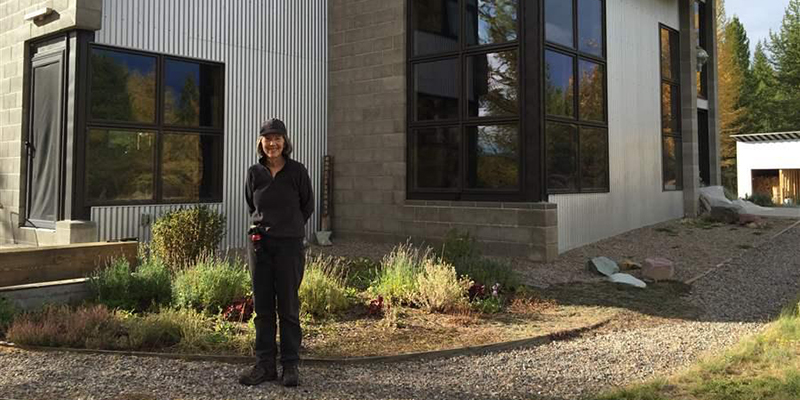
 |
| Living safely with wildfires. |
| by M. Dwayne Garriss |
SHARE    |
 |
| Molly Shepherd has worked hard to protect her Montana property from wildfire, including building with fire-resistant concrete and metal. ©The Pew Charitable Trusts |
| Lake Isabella, Calif., is a mecca for boaters, water skiers and hunters, nestled in the Sequoia National Forest with beautiful views of the Sierra Nevadas to the east. Recently, however, many of us have watched media reports as a 68-square-mile wildfire, fueled by years of drought, strong winds and high temperatures, killed at least two people, destroyed 200 homes and claimed thousands of acres of forest.
Some 150 miles to the south, two wildfires fueled by the same combination have destroyed nearly 4,500 acres in the San Gabriel Mountains, with officials saying only a canyon prevented the fires from merging into one massive inferno. Still, those fires in part of the Angeles National Forest, only two dozen miles from the city of Los Angeles, forced hundreds to evacuate their homes. Some 300 U.S. Forest Service crew members were tackling the 1,500-acre blaze near Azusa aided by water-dropping helicopters. Nearly 100,000 wildfires burn approximately seven million acres of land each year, according to the International Association of Wildland Fire statistics. Three percent of those fires cause major damage in areas where development meets woodlands, such as in the tragic examples mentioned. Since 1990, 4,000 acres of woodlands are developed each day — two million acres a year — according to statistics. State foresters have identified 220 million acres of land with timber nationwide that are at risk for fires because of their proximity to 46 million single-family homes, several hundred thousand businesses and more than 120 million people. Firefighters and civilians perish each year in these fires, many of which occur in areas that do not have any construction codes and standards pertaining to the wildland-urban interface. What can you do? The International Code Council strongly recommends officials in at-risk communities adopt codes such as the International Wildland-Urban Interface Code (IWUIC) and help educate residents and businesses about what they can do to stay safe and prevent wildfires. By visiting www.iccsafe.org/protect-your-home-from-wildfire, you can glean valuable information to protect your homes and businesses, including: |
|
| The National Association of Counties, National Association of State Foresters, Society of American Foresters and the Western Governors' Association offer a handbook to help communities develop a plan. They also offer a Community Wildfire Protection Plan to identify the resources and strategies to protect your community. You can find links to both at www.iccsafe.org/about-icc/safety/wildfire-safety. During National Building Safety Month in May, President Obama signed an executive order calling for federal buildings located within the wildland-urban interface to be in compliance with the IWUIC. Further, the National Ready Mixed Concrete Association has launched the first-of-its-kind Build with Strength program that encourages states to take proactive approaches to strengthen the resilience of the built environment against wildfires. With proper regulation and care, woodlands can continue to provide scenery while homes and businesses are secure. We at the International Code Council encourage you to learn more about living safely with wildfires. M. Dwayne Garriss is the Fire Marshal for the State of Georgia and Vice President of the International Code Council Board of Directors. |